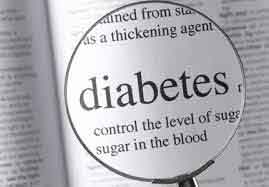- Home
- Medical news & Guidelines
- Anesthesiology
- Cardiology and CTVS
- Critical Care
- Dentistry
- Dermatology
- Diabetes and Endocrinology
- ENT
- Gastroenterology
- Medicine
- Nephrology
- Neurology
- Obstretics-Gynaecology
- Oncology
- Ophthalmology
- Orthopaedics
- Pediatrics-Neonatology
- Psychiatry
- Pulmonology
- Radiology
- Surgery
- Urology
- Laboratory Medicine
- Diet
- Nursing
- Paramedical
- Physiotherapy
- Health news
- Fact Check
- Bone Health Fact Check
- Brain Health Fact Check
- Cancer Related Fact Check
- Child Care Fact Check
- Dental and oral health fact check
- Diabetes and metabolic health fact check
- Diet and Nutrition Fact Check
- Eye and ENT Care Fact Check
- Fitness fact check
- Gut health fact check
- Heart health fact check
- Kidney health fact check
- Medical education fact check
- Men's health fact check
- Respiratory fact check
- Skin and hair care fact check
- Vaccine and Immunization fact check
- Women's health fact check
- AYUSH
- State News
- Andaman and Nicobar Islands
- Andhra Pradesh
- Arunachal Pradesh
- Assam
- Bihar
- Chandigarh
- Chattisgarh
- Dadra and Nagar Haveli
- Daman and Diu
- Delhi
- Goa
- Gujarat
- Haryana
- Himachal Pradesh
- Jammu & Kashmir
- Jharkhand
- Karnataka
- Kerala
- Ladakh
- Lakshadweep
- Madhya Pradesh
- Maharashtra
- Manipur
- Meghalaya
- Mizoram
- Nagaland
- Odisha
- Puducherry
- Punjab
- Rajasthan
- Sikkim
- Tamil Nadu
- Telangana
- Tripura
- Uttar Pradesh
- Uttrakhand
- West Bengal
- Medical Education
- Industry
3D MRI Can Spot Stroke Risk in Diabetic Patients

People with diabetes may be harbouring advanced vascular disease that could increase their risk of stroke, researchers warn.The findings suggest that arterial imaging with 3D MRI could be useful in helping to determine stroke risk among diabetics.
The carotid arteries are vessels on each side of the neck that supply oxygenated blood to the head.
Narrowing of the carotid arteries is associated with risk of stroke but less is known about stroke risk in people with little or no narrowing of these arteries.
For the new study, the team used 3D MRI to study the carotid arteries for evidence of intraplaque hemorrhage (IPH), an indicator of advanced atherosclerotic disease.
"A recent analysis has shown that people with carotid artery narrowing and IPH have a five- to six-times higher risk of stroke in the near future compared to people without," explained study author Tishan Maraj, imaging analyst at Sunnybrook Research Institute in Toronto.
Dr Maraj and colleagues focused their study on people with diabetes.
Of the 159 patients imaged, 37 (23.3 per cent) had IPH in at least one carotid artery.
Five of the 37 patients had IPH in both carotid arteries.
IPH was found in the absence of carotid artery narrowing and was associated with an increased carotid artery wall volume as measured by 3D MRI.
"It was surprising that so many diabetic patients had this feature. So perhaps IPH is an early indicator of stroke risk that should be followed up," Dr Maraj added.
Although there is no treatment for IPH at this time, Dr Maraj said identification of it may help with risk stratification and could even have applications in the non-diabetic population.
"Even though you can't treat IPH, you can monitor patients a lot more closely," he concluded.
The new research will be presented next week at the annual meeting of the Radiological Society of North America (RSNA).
The carotid arteries are vessels on each side of the neck that supply oxygenated blood to the head.
Narrowing of the carotid arteries is associated with risk of stroke but less is known about stroke risk in people with little or no narrowing of these arteries.
For the new study, the team used 3D MRI to study the carotid arteries for evidence of intraplaque hemorrhage (IPH), an indicator of advanced atherosclerotic disease.
"A recent analysis has shown that people with carotid artery narrowing and IPH have a five- to six-times higher risk of stroke in the near future compared to people without," explained study author Tishan Maraj, imaging analyst at Sunnybrook Research Institute in Toronto.
Dr Maraj and colleagues focused their study on people with diabetes.
Of the 159 patients imaged, 37 (23.3 per cent) had IPH in at least one carotid artery.
Five of the 37 patients had IPH in both carotid arteries.
IPH was found in the absence of carotid artery narrowing and was associated with an increased carotid artery wall volume as measured by 3D MRI.
"It was surprising that so many diabetic patients had this feature. So perhaps IPH is an early indicator of stroke risk that should be followed up," Dr Maraj added.
Although there is no treatment for IPH at this time, Dr Maraj said identification of it may help with risk stratification and could even have applications in the non-diabetic population.
"Even though you can't treat IPH, you can monitor patients a lot more closely," he concluded.
The new research will be presented next week at the annual meeting of the Radiological Society of North America (RSNA).
Next Story


